Kimberly Sultze and Jon Hyde hail from one of the pleasantest towns I know, Burlington, Vermont. Besides being nice people, they are professors of digital media and related subjects at St. Michael's College, and enthusiastic and expert nature photographers. When I met them they were just finishing a sabbatical as Fulbright Scholars, teaching media studies at Universiti Malaysia Sarawak Before leaving they wanted to get in as much of the local wildlife as they could. On March 9, 2014, Vincent Wong led Kimberley, Jon and I on a morning trip that took in both the rainforest at Kubah National Park and some very different, urban habitat, along the waterfront in the town of Telaga Air.
Our first stop, of course, was the frog pond at Kubah. The pond is at its best by night, but even in daylight it is still possible to turn up the odd amphibian. This is a White-lipped Frog (Hylarana raniceps).
I seem to photograph this clump of fruit (or its regular replacements) every time I visit the frog pond. I haven't, though, the faintest idea what it is. Can anyone help me?
This little mammal was something new for me: a Three-striped Ground Squirrel (Lariscus insignis). Unlike many of Borneo's squirrels, this is not an endemic; it ranges widely through Southeast Asia, from Thailand to Sumatra. It was shy and fast-moving, and this partially-obscured shot was the best I could get.
Another subject I always find myself photographing at the frog pond: the stunning forest dragonfly Cratilla metallica.
I usually find Orthetrum glaucum, a dragonfly that prefers more sunny locales, back out on the main road.
The adult male and female of Orthetrum glaucum are strikingly different, thanks largely to the powdery coat of blue pruinescence that develops over the male's abdomen as he matures.
The Bright Red Velvet Bob (Koruthaialos sindu) is a common skipper along the forest edge, and one of the easier of its family to identify. The species ranges from eastern India and China south and east to Sumatra and Borneo.
I couldn't resist showing this one in flight, even if it's not the best photograph.
More graceful in the air, at least as it swoops down to a flower, is the Tailed Jay (Graphium agamemnon).
The Tailed Jay is an active butterfly in more ways than one; in India it can produce 7-8 broods per year. The authors of the Indian study noted that "Adults frequently visited flowers (12-35 flowers in a min) spending 1.0 to 3.2 seconds on a flower.... The proboscis received pollen in most of the floral species visited, thus satisfying one of the characteristics of butterfly pollination. Being a fast and strong flier it is treated as "high energy" pollinator promoting cross-pollination."
Less dramatic, but still attractive: a Rustic (Cupha erymanthis), showing somes signs of wing damage (a narrow escape from a bird, perhaps?).
I have written about processional termites (Hospitalotermes sp) before, in an earlier posting; they are interesting insects, and streams of them are a frequent sight on the forest floor (where most visitors, I suspect - including myself, when I first met them - mistake them for ants).
A few postings back, I put up some poor shots of an Indian Cuckoo (Cuculus micropterus) on the grounds that it was the first time that I had actually seen, rather than heard, this common, noisy, but notoriously hard-to-spot bird. This time I not only saw one, but got some photos that I hope I don't have to apologize for. For those who know its relative the Common Cuckoo (C. canorus) this is a smaller, slimmer and altogether more graceful bird.
I suspect one of the high spots for Kimberly and Jon was a chance to see the tiny tadpoles of the highly-local Matang Narrow-mouthed Frog (Microhyla nepenthicola) - the stars of an earlier posting here - swimming in their little personal aquaria, pitchers of Nepenthes ampullaria growing by the roadside below the frog pond.
From the forest to the town: Telaga Air, a pretty little town at the mouth of the Sungai Sibu west of Kuching (the Borneo Post describes it as "idyllic" and "a quaint and vibrant Malay fishing village").
We headed down to the waterfront, where local boats tie up between fishing trips out to the river delta.
Our interest, of course, was still nature: in this case, besides the river view, a few urban birds. The pilings along the waterfront, besides providing anchorage for boats, supplied nesting an foraging grounds for a pair of Sunda Pygmy Woodpeckers (Picoides moluccensis)....
...while a Pied Triller (Lalage nigra) sat on its nest in tree above the road. These are, admittedly, birds I can see in the little park behind our Kuching apartment - but nature lovers, from Sarawak or Vermont, can rejoice in city wildlife too.






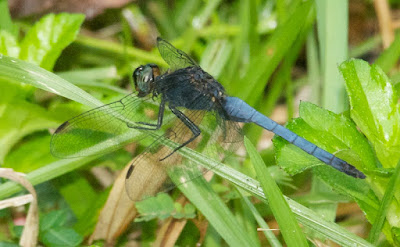

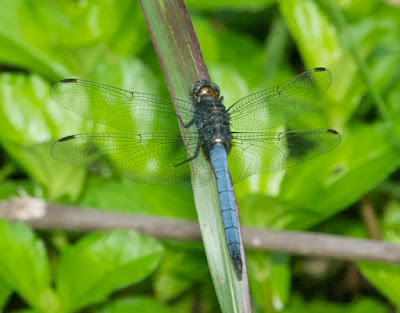





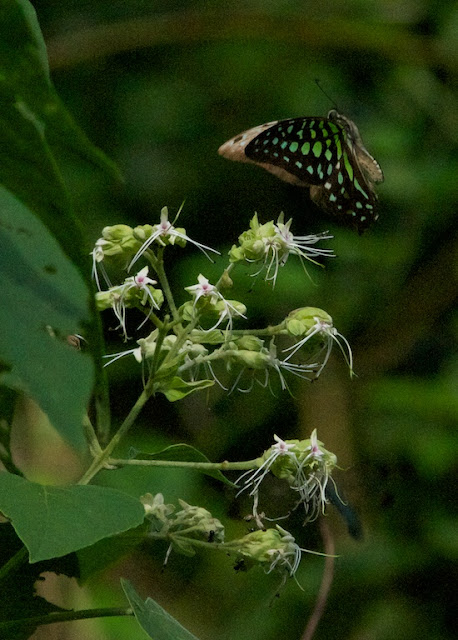









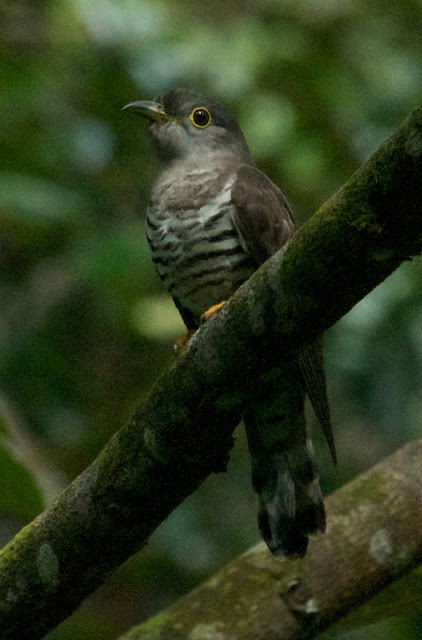
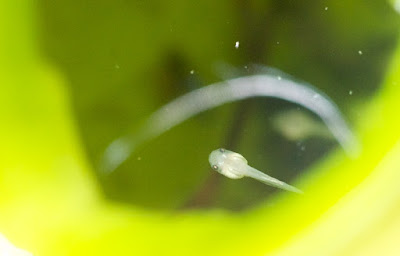







No comments:
Post a Comment